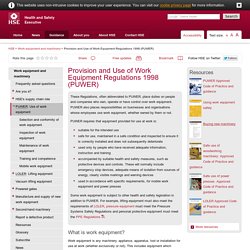

Helmet, welding mask, ovrhalls, Glassers, ear defenders, ... Reporting of Injuries, Diseases and Dangerous Occurrences Regulations. The Reporting of Injuries, Diseases and Dangerous Occurrences Regulations 2013, often known by the acronym RIDDOR is a 2013 Statutory Instrument of the Parliament of the United Kingdom.

It regulates the statutory obligation to report deaths, injuries, diseases and "dangerous occurrences" that take place at work or in connection with work.[3][4] One of the worst colliery explosions - The Oaks colliery disaster killed more than 300 people in 1866.[5] Even today, hundreds are killed at work each year in the UK The regulations require "responsible persons" to report deaths at work, major injuries caused by accidents at work, injuries to persons not at work that require hospital treatment, injuries arising from accidents in hospitals, and dangerous occurrences (reg.3(1)). Additionally, the law requires registered gas fitters to report poor and dangerous gas installations (reg.6). Responsible persons are generally employers but also include various managers and occupiers of premises (reg.2). Provision and Use of Work Equipment Regulations 1998 (PUWER) - Work equipment and machinery.
These Regulations, often abbreviated to PUWER, place duties on people and companies who own, operate or have control over work equipment.

PUWER also places responsibilities on businesses and organisations whose employees use work equipment, whether owned by them or not. PUWER requires that equipment provided for use at work is: suitable for the intended use safe for use, maintained in a safe condition and inspected to ensure it is correctly installed and does not subsequently deteriorate used only by people who have received adequate information, instruction and training accompanied by suitable health and safety measures, such as protective devices and controls. These will normally include emergency stop devices, adequate means of isolation from sources of energy, clearly visible markings and warning devices used in accordance with specific requirements, for mobile work equipment and power presses What is work equipment?
What you must do What you should know. Control of Substances Hazardous to Health (COSHH) - COSHH. Health and Safety at Work Act. Before 1974 approximately 8 million employees had no legal safety protection at work.

The Health and Safety at Work Act 1974 provides the legal framework to promote, stimulate and encourage high standards of health and safety in places of work. It protects employees and the public from work activities. Everyone has a duty to comply with the Act, including employers, employees, trainees, self-employed, manufacturers, suppliers, designers, importers of work equipment. Employers' responsibilities The Act places a general duty to 'ensure so far as is reasonably practicable the health, safety and welfare at work of all their employees'. Employers must comply with the Act. An employer is forbidden to charge his or her employees for any measures which he or she is required to provide in the interests of health and safety (for example, personal protective equipment).
Employees’ responsibilities Employees have specific responsibilities too - they must: Enforcement of Health and Safety legislation. HSE: Information about health and safety at work. Dust Mask, Boots, Gloves , Helmet, Eye Protection, Ear Pr... Toxic, Very Toxic, Harmful, Irritant , Highly Flamable, E... Flamable Materials, Explosive, Toxic, Corrosive, Danger o...